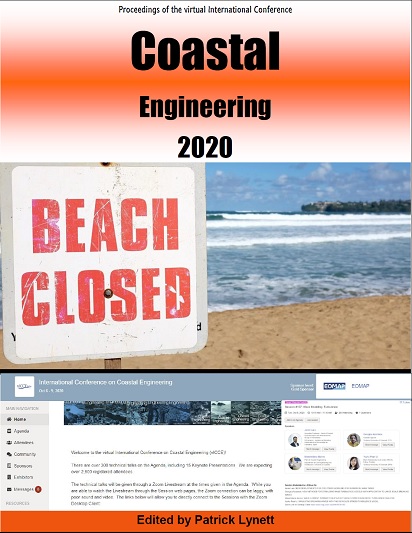Abstract
The present study formally proved that Reynolds stress models (RSMs) are unconditionally stable in the potential flow regions. RSMs resolve all components of the Reynolds stress, eliminating e.g. the assumed isotropy of turbulence inherent within two-equation models. The present study implemented and applied Wilcox stress-omega turbulence model for simulating breaking waves. It shows that the Wilcox stress-omega turbulence model can predict accurate results from pre-breaking all the way into the inner surf zone, especially for the undertow velocity profiles in the inner surf zone, which even stabilized two-equation models fails to accurately predict.Recorded Presentation from the vICCE (YouTube Link): https://youtu.be/hZqqlGbHpkA
References
Brown, S.A., Greaves, D.M., Magar, V. & Conley, D.C. (2016). Evaluation of turbulence closure models under spilling and plunging breakers in the surf zone. Coast. Eng., vol. 114, pp. 177–193.
Jensen, B. L., Sumer, B. M., & Fredsøe, J. (1989). Turbulent oscillatory boundary layers at high Reynolds numbers. Journal of Fluid Mechanics, 206, 265-297.
Larsen, B.E. & Fuhrman, D.R. (2018). On the over-production of turbulence beneath surface waves in Reynolds-averaged Navier-Stokes models. J. Fluid Mech., vol. 853, pp. 419—460.
Launder, B.E., Reece, G.J. & Rodi, W. (1975). Progress in the development of a Reynolds-stress turbulent closure. J. Fluid Mech., vol. 68, pp. 537—566.
Ting, F.C.K. & Kirby, J.T. (1994). Observation of undertow and turbulence in a laboratory surf zone. Coast. Eng., vol. 24, pp. 51-80.
Wilcox, D. C. (2006). Turbulence Modeling for CFD. 3rd edition, DCW Industries, Inc., La Canada CA.

